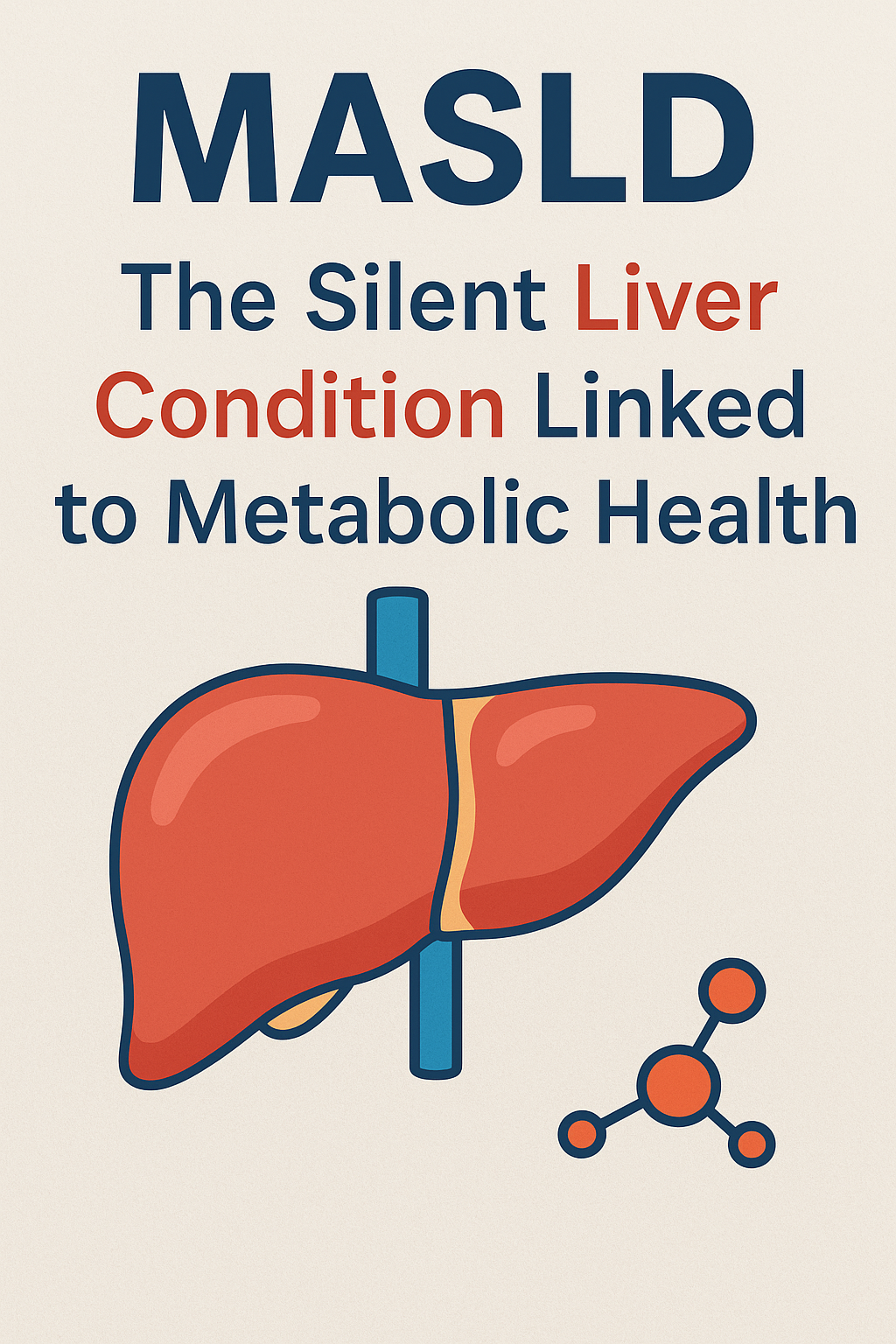Cow’s milk has long been touted as a near-essential part of a healthy diet, but opinions are divided on its role for adults. Some praise milk as a “complete food” packed with nutrients, while others point to digestive issues or ethical concerns. In this deep dive, we’ll explore the scientific evidence on the nutritional benefits of cow’s milk for adults, how the dairy industry (especially in India) has evolved 🐄, the rise of lactose intolerance and IBS, perspectives on when and who should drink milk (from Ayurveda to modern nutrition), and how dairy compares with popular plant-based alternatives. Let’s find out if that glass of milk is 🥛 moo-tivational or if you’re better off with other options!
Nutritional Benefits of Cow’s Milk for Adults
Cow’s milk is often considered a nutrient-dense beverage. In fact, it’s frequently called a “complete food” because it provides a balance of high-quality protein, carbohydrates, and fats along with many essential micronutrients.
A single cup (250 ml) of whole milk contains:
- 8 grams of High-Quality Protein: Milk protein (a mix of casein and whey) has a high biological value, meaning it contains all essential amino acids in proportions the body needs. This helps with muscle maintenance and overall growth. (No wonder fitness enthusiasts still love their post-workout chocolate milk 💪!)
- Calcium and Bone Health: Dairy is one of the best dietary sources of calcium – providing around 300 mg per cup. In many populations, milk and dairy contribute over half of the daily calcium intake, crucial for bone density and preventing osteoporosis. Milk also provides vitamin D (in fortified milk or naturally in small amounts), phosphorus, and magnesium, which together support healthy bones and teeth.
- Important vitamins and minerals include vitamin B, vitamin A, and potassium.
Impact on adults’ health
The good news is that for most people, moderate milk intake is not associated with harm – and may even confer some benefits:
-
Weight Management: Contrary to the idea that full-fat milk “makes you fat,” evidence suggests dairy intake (even whole milk) does not increase obesity risk. In fact, in calorie-controlled diets, adding dairy can improve body composition and aid fat loss.
-
Metabolic Health: Drinking milk has a neutral or slightly beneficial effect on type 2 diabetes risk. The combination of calcium, vitamin D, and dairy proteins may improve insulin sensitivity and weight control, helping reduce diabetes risk or manage blood sugar.
-
Heart Health: Though milk contains saturated fat, population studies generally do not find higher heart disease rates in milk drinkers. Some research even links milk to a lower risk of stroke. The effect of milk fat on cholesterol is complex – it raises HDL (“good”) cholesterol alongside LDL, and milk’s overall impact on cardiovascular risk appears neutral in most studies. Of course, if you’re watching saturated fat intake, opting for low-fat or skim milk is an easy way to reduce it.
-
Bone and Muscle Health: Adequate dairy intake is consistently linked with better bone mineral density in adults. Milk’s protein plus calcium combo is also great for maintaining muscle mass, especially in older adults.
-
Cancer and Overall Health: Fears that milk might fuel cancers have largely not been borne out by research. Reviews have found either no association or even a protective association between milk intake and several cancers (like colorectal and breast cancer). There is one exception: prostate cancer. Some (but not all) studies have observed a slight increase in prostate cancer risk with high dairy or calcium intake, but the evidence is inconsistent.
Bottom line: For adults who tolerate it, cow’s milk can be a convenient source of quality nutrients that support bones, muscles, and metabolic health. It’s not a miracle food, but including a moderate amount of milk or dairy (e.g. a glass or two a day) as part of a balanced diet is generally considered beneficial by modern nutrition science. 🥛👍
The Changing Indian Dairy Industry (and A1 vs A2 Milk)
India has a unique relationship with milk – it’s both a staple in the diet and intertwined with culture (think of the revered status of cows 🐮). Over the last few decades, India’s milk industry has undergone massive changes in scale and practice:
-
The White Revolution: In the 1970s, India launched “Operation Flood,” a national dairy development program that transformed it from a milk-deficient country into the world’s largest milk producer today. Milk production in India skyrocketed thanks to the establishment of cooperatives (like Amul) and the introduction of high-yield foreign-breed cattle. Traditional small-scale hand-milking gave way in many areas to more industrialised, high-output dairy farming.
-
Crossbreeding and Industrialization: To boost yields, Indian indigenous cows (Bos indicus, zebu breeds) were crossbred with European breeds (Bos taurus like Holstein-Friesians, Jersey, etc.). These crossbreds produce much more milk, making dairying more profitable. However, crossbreeding also introduced genetic differences in milk.
-
Notably, it brought in the A1 variant of beta-casein protein, which was absent in most native Indian cows that naturally produce only the A2 beta-casein. (Beta-casein is one of the major milk proteins – more on A1 vs A2 in a moment.)
-
Along with genetics, modern dairy farms began adopting practices like year-round breeding, packaged cattle feed, mechanised milking, cold storage supply chains, etc., to meet the growing urban demand for milk.
-
-
Hormone Use Concerns: Intensive dairying sometimes brings ethical and safety concerns. One issue in India has been the illicit use of the hormone oxytocin to increase milk let-down in cows and buffaloes. Despite being banned, oxytocin injections have been widely misused by some farmers to boost milk production, which authorities warn can harm the animals and potentially consumers.
-
A1 vs A2 Milk Debate: Perhaps the biggest talking point in recent years has been the differentiation of A1 vs A2 milk.
-
The A1 and A2 labels refer to two genetic variants of the beta-casein protein in cow’s milk.
-
Traditional Indian (“desi”) cows produce milk that contains only A2 beta-casein, whereas the milk from crossbred/European cows contains a mix of A1 and A2.
-
Some research hypothesizes that A1 beta-casein might be less friendly to human digestion. When A1 is digested, it releases a peptide called BCM-7, which some studies have linked to digestive discomfort and other effects, though findings are not yet conclusive.
-
In contrast, A2 beta-casein does not produce BCM-7.
-
A growing number of consumers (especially in India, Australia, and New Zealand) swear that A2 milk is easier on their stomach and health.
-
In one notable study on adults in China who were self-described as lactose-intolerant, participants reported no digestive symptoms with A2 milk, but did experience discomfort after drinking regular (A1/A2) milk. This suggests some people’s milk indigestion might be due to the protein type rather than lactose per see.
-
That said, the science on A1 vs A2 is still emerging, and not everyone is convinced.
-
Major food safety agencies have reviewed the evidence and remain cautious. For example, the European Food Safety Authority in 2009 found no need to differentiate A2 from conventional milk, and as of 2024 India’s food regulator (FSSAI) has forbidden companies from marketing “A2 milk” as a superior product, calling such claims misleading and not yet backed by solid evidence.
-
So, while you might personally find A2 milk gentler if you have dairy sensitivity, keep in mind that the overall nutritional composition of A1 vs A2 milk is the same. A2 milk tends to be more expensive as it comes from specific breeds.
-
If you do not notice any issues with regular milk, there’s no clinically proven reason to switch.
-
In summary, the Indian dairy scene has evolved from local cows in backyard sheds to a mix of industrial farms and village cooperatives fueling a dairy powerhouse. Modernization has improved supply and food security (you can get your packet of pasteurized milk in any city every morning 🥛), but it’s brought new challenges like the A1/A2 controversy, concerns of hormone use or adulteration, and the need for stricter quality controls. As consumers, being aware of these aspects can help in making informed choices – whether it’s seeking out milk from hormone-free sources, trying A2 milk to see if it suits you better, or deciding to moderate milk intake for personal health reasons.
Lactose Intolerance and IBS: The Digestive Dilemma 😟
While milk is nutritious, not everyone’s digestive system is on board with the idea of drinking it. Lactose intolerance and dairy-sensitive irritable bowel syndrome (IBS) cases are common, and seem to be increasingly recognized, especially among Indian adults in recent years.
- Lactose Intolerance is the inability to fully digest lactose, the natural sugar in milk.
- Undigested lactose ferments in the gut, causing gas, bloating, cramps, and diarrhea.
- It’s not an allergy (which would be an immune reaction to milk proteins), but it can be very uncomfortable.
- Globally, lactose intolerance is the norm rather than the exception – about 65% of adults worldwide have reduced lactase after childhood.
- In South Asia, lactose intolerance is widespread. Studies in India have found that the majority of adults have some degree of lactose malabsorption. For instance, a clinical study in north India reported lactose intolerance (by breath test) in ~77% of healthy adults!
- The good news is that lactose intolerance severity varies. Some people can manage a glass of milk if taken with food, or can eat yogurt/curd or cheese (which have less lactose) without issues, but others might get symptoms even with a small splash of milk in chai.
- Tips for the lactose intolerant:
- Fermeted dairy like yogurt and kefir are usually better tolerated because friendly bacteria pre-digest some lactose.
- Hard cheeses have very little lactose.
- Spreading dairy intake in small amounts through the day or taking lactase enzyme supplements can help.
- And of course, there are lactose-free milk products available (regular milk treated with lactase enzyme) – these taste just like milk but a touch sweeter (since lactose is broken down into simpler sugars) and cause no symptoms.
- Irritable Bowel Syndrome (IBS) is a functional gut disorder characterized by abdominal pain, bloating, and altered bowel habits (diarrhea and/or constipation).
- IBS seems to be on the rise in India, with lifestyle changes and stress often cited as triggers.
- Reported prevalence of IBS in Indian populations ranges up to ~4% (though it could be higher due to underreporting).
- Many people with IBS find that dairy aggravates their symptoms.
- Lactose is a FODMAP (a type of fermentable carb) that can trigger IBS flares, and even the fats in dairy or the proteins might bother some individuals with sensitive guts.
Bottom line for sensitive tummies: If you experience IBS or lactose intolerance, you don’t have to swear off dairy entirely – but you will need to customize your approach. Many Indians with lactose intolerance comfortably consume milk in the form of curd (dahi) or buttermilk (chaas), which are easier on the gut. Others might opt for plant-based milk alternatives (we’ll cover those next) in place of straight cow’s milk. Always consult a doctor or dietician if you have severe or persistent GI issues, to rule out other conditions like dairy allergy or celiac disease, which can mimic intolerance. 🐄🤔
When and Who Should Drink Milk? (Ayurveda 🕉️ vs. Modern Nutrition)
Is there a “right time” or a “right person” to drink milk? Culturally, in India we’ve grown up with some pretty specific notions: a glass of turmeric milk at bedtime for better sleep, milk to bolster a growing child’s diet, or a warm cup for an elder’s aching joints. Let’s explore this both from the lens of Ayurveda (traditional wisdom) and modern nutrition science.
🕉️ Ayurveda’s Perspective
In Ayurveda, cow’s milk is considered a highly sattvic (pure, nourishing) food, almost like an elixir when used appropriately. Ayurveda holds that milk, when digested well, nourishes all the tissues (dhatus) and promotes ojas, the essence of vitality and immunity. Here are some Ayurvedic insights on milk:
-
Best Time to Drink Milk: Ayurveda recommends consuming milk in the evening or at night.
-
A cup of warm milk before bed, often spiced with a pinch of cinnamon, nutmeg, or turmeric, is said to calm the mind and promote sound sleep.
-
Modern reasoning also agrees that the tryptophan in milk can help with sleep, and the calcium is utilized well at night.
-
Morning milk is not advised for everyone; Ayurvedic texts note that kapha dosha is dominant in the morning, and milk (which increases kapha) might slow digestion or cause mucus.
-
However, children under 5 and very active people (like those doing heavy physical work or exercise) are encouraged to have milk in the morning as well, since they can digest it and benefit from the extra nutritiontimesofindia.indiatimes.com.
-
-
Who Should/Shouldn’t Have It: Generally, Ayurveda sees milk as beneficial for all ages – from children to the elderly – as long as it’s digested properly.
-
It’s especially indicated for people who need strengthening and nourishment (for example, convalescents, the underweight, or those with vata imbalances needing grounding).
-
Ayurveda knew about milk “allergy” in concept, describing some people who just don’t tolerate milk – they’d avoid it or use diluted/fermented forms.
-
Also, during a cough/cold or when kapha is aggravated (lots of mucus, congestion), Ayurveda advises against milk as it could increase phlegm.
-
-
How to Consume (the Right Way): Ayurveda places emphasis on combining foods wisely. Milk is considered incompatible with certain foods and if taken with incompatible foods, it is called viruddh ahaar.
-
For example, mixing milk with sour or citrus fruits is a no-no, as it can curdle and form toxins (ama) in the body.
-
The classic example: banana milkshake – sorry, smoothie lovers, but Ayurveda frowns on this combo 🙅♂️. They claim it can disturb the gut’s “fire” and create congestion or allergies.
-
Instead, milk is best enjoyed on its own or with mild sweet foods.
-
Golden rule: avoid combining milk with fish, meat, sour fruits, or salt.
-
On the other hand, adding healing herbs/spices to milk is encouraged. This includes turmeric (for immunity – the famous “golden milk” or haldi doodh), ashwagandha (for stress relief and strength), ginger (to aid digestion), etc. These not only enhance milk’s properties but also help our body digest it better.
-
In summary, Ayurveda cherishes milk but with caveats: have it warm, have it at night, and don’t mix it willy-nilly with incompatible foods.
🥼 Modern Nutrition’s Take
From a modern scientific perspective, who should drink milk? The short answer is: anyone who enjoys it and isn’t intolerant or allergic can include milk in their diet – it’s nutritious and beneficial – but it’s not absolutely mandatory for everyone. Humans are remarkably adaptable; you can get the nutrients in milk from other sources if needed. However, certain groups find milk/dairy especially useful:
-
Children and Teens: Milk is often recommended for growing kids as a convenient source of protein, calcium, and calories. During the bone-building years, calcium and vitamin D (often added to milk) are vital. Many countries’ dietary guidelines suggest 2-3 servings of dairy per day for kids and adolescents to meet nutritional requirements.
-
Pregnant/Breastfeeding Women: They have higher calcium and protein needs, so milk can help meet those. It also provides iodine and B12 important for the baby’s development (in India, many women are vegetarian, so dairy is a key B12 source).
-
Athletes and Active Adults: Milk can be a great post-exercise recovery drink. It’s naturally high in electrolytes, provides fluid for rehydration, carbohydrates to replenish energy, and protein for muscle repair. In fact, chocolate milk has been shown in some sports studies to be as effective as specialized sports drinks for recovery. 💪 For those trying to build muscle or looking for a high-quality protein source, milk (and dairy products like cottage cheese, Greek yogurt, etc.) is very convenient.
-
Middle-Aged and Elderly: As we get older, maintaining bone density and muscle mass becomes a priority. Each decade after 30, we slowly lose bone and muscle if we don’t actively work to preserve them. Dairy’s combo of calcium, vitamin D (in fortified milk), and protein can help counteract this. Studies indicate that adequate dairy, alongside exercise, reduces osteoporosis risk and sarcopenia (muscle loss) in seniors.
-
Those with Dietary Restrictions: For vegetarians (ovo-lacto vegetarians) who avoid meat, milk is a crucial source of complete protein and vitamin B12. In an Indian context, many vegetarians rely on dairy to meet protein needs since pulses are great but can only do so much. Similarly, if someone doesn’t eat fish, milk is a primary source of iodine in the diet in many regions.
Who might limit or avoid milk?
- Aside from people with lactose intolerance or milk allergy (who obviously should avoid or substitute it), individuals who follow a vegan diet or have ethical/environmental concerns won’t consume dairy.
- Some people with acne or certain hormonal conditions find that dairy exacerbates it (possibly due to hormones in milk or insulin-like growth factors it triggers); in such cases, a trial of going dairy-free might be considered to see if skin improves.
How much milk is good? Moderation is key.
- Most dietary guidelines suggest 2-3 servings of dairy a day for adults (a serving being 1 cup milk or ~40g cheese or 1 cup yogurt) to meet calcium and protein requirements. Studies have shown intakes up to at least 3 servings a day are safe and beneficial for chronic disease prevention.
In modern nutrition, unlike Ayurveda, there’s no official warning against mixing milk with foods, except that iron supplements or iron-rich meals might inhibit calcium absorption a bit and vice versa.
Bottom Line: Milk is a healthy choice for most adults and can be particularly beneficial for certain groups (kids, athletes, elders). But it’s not an indispensable “magic potion” – you won’t miss out on health solely by avoiding milk, as long as you compensate with other foods. Listen to your body’s tolerance and your personal values.
Dairy vs. Plant-Based Milk Alternatives 🥛🌱: Pros & Cons
With the rise of vegan diets and lactose intolerance awareness, plant-based “milks” have become incredibly popular. Almond milk lattes and oat milk smoothies are now mainstream. How do these alternatives stack up against cow’s milk, and what are their pros and cons? Here’s a comparative look at some popular options:
-
Soy Milk (Soy Beverage) 🫘 –
-
Pros:
-
High protein (~7–8 g per cup, comparable to dairy)
-
Fortified with calcium, vitamin D, and vitamin B12
-
Beneficial phytochemicals (isoflavones) linked to heart health (lower LDL cholesterol).
-
Lactose-free and a good option for those with dairy allergy or intolerance.
-
-
Cons:
-
Strong flavor
-
Contains phytoestrogens (isoflavones), which are not harmful in normal dietary amounts, but the “hormone” myth sometimes puts people off
-
Soy can cause an allergy (not uncommon)
-
-
-
Almond Milk 🌰 –
-
Pros:
-
Very low in calories
-
Pleasant, slightly nutty taste
-
Good source of vitamin E (coming from almonds), an antioxidant beneficial for skin and immune health.
-
Naturally lactose-free, soy-free, and dairy-free, making it suitable for people with multiple food intolerances.
-
-
Cons:
-
Extremely low in protein
-
Needs fortification to provide calcium and vitamin D; otherwise, its nutrient content (besides vitamin E) is not close to cow’s milk.
-
Many almond milks contain additives like gums and emulsifiers to improve texture
-
Almonds require a lot of water to grow, so large-scale almond milk production raises water usage concerns
-
-
-
Oat Milk 🌾 –
-
Pros:
-
Creamy texture and mild, sweet taste
-
Higher in carbohydrates (naturally from oats), which makes it thicker and more satiating than almond milk.
-
Source of soluble fiber (beta-glucan), good for heart health and digestion
-
Fortified with calcium, B12, and vitamin D
-
-
Cons:
-
Higher glycemic index
-
Low in protein (~2–3 g per cup),
-
Higher in calories
-
May contain added oil (like rapeseed oil) to improve creaminess
-
-
- Coconut Milk 🥥(beverage) –
-
Pros:
-
Very creamy and has a tropical flavour
-
High in saturated fat which makes it filling and suitable for ketogenic or very low-carb diets
-
Completely lactose-free and nut-free
-
-
Cons:
-
High saturated fat (around 4-5 g per cup) may raise LDL cholesterol in some individuals
-
Almost no protein (much like almond milk), and typically low in other nutrients (like calcium) unless fortified.
-
Strong flavour can overpower some recipes
-
-
-
Rice Milk 🍚 –
-
Pros:
-
Most hypoallergenic (no lactose, no soy, no nuts, no gluten if made from white rice)
-
Naturally sweet so doesn’t need as much added sweetener
-
Thin consistency but works well in cereal or baking.
-
-
Cons:
-
Very high in carbs (and sugars) – about 20+ g per cup – and has a high glycemic index,
-
Very low protein (~0.5 g per cup)
-
Drinking regularly could pose a risk of arsenic exposure if it’s made from rice containing arsenic (a contaminant that can accumulate in rice); this is mainly a concern for infants/children, which is why paediatricians caution against rice milk as a primary milk for kids.
-
Nutrient-wise, it needs fortification to contribute vitamins and calcium.
-
-
When comparing dairy and plant-based milks, keep in mind that cow’s milk naturally has a consistent nutrient profile, whereas plant milks vary a lot by brand and recipe. Always check if your plant milk is fortified. Ultimately, the “best” milk depends on your individual needs and values. It’s wonderful that we have so many choices now. You can even mix and match – use dairy milk on some occasions, almond or oat milk on others – there are no rules set in stone. 🥛🌱
Conclusion & Suggestions
So, does milk have any nutritional benefits for adults? Absolutely – cow’s milk is a wholesome, nutritionally rich food that can support adult health in many ways. It provides quality protein for our muscles, calcium for our bones, and a cocktail of vitamins and minerals in each glass. Scientific studies largely affirm that moderate milk intake is neutral or beneficial for most adults, and not the health villain some make it out to be. If you enjoy milk and it suits you, you have plenty of reasons to continue (in moderation, of course).
That said, milk is not a must-have. Adults have no biological requirement for dairy specifically; it’s just one convenient way to get nutrients. Many people around the world live healthily on entirely dairy-free diets. If you cannot tolerate lactose or choose to avoid animal products, you can obtain all necessary nutrients through other foods or fortified plant alternatives. The rise of lactose intolerance recognition and IBS means many adults are re-evaluating their dairy intake. The good news is you don’t have to suffer – with options like lactose-free milk, A2 milk, or plant-based milks, you can still enjoy a milk-like experience without the digestive woes. 🥳
If you do consume milk, here are a few suggestions for maximizing benefits and minimizing issues:
-
Choose quality if possible: Sourcing milk from dairies that don’t use hormones or antibiotics indiscriminately is ideal. In India, look for trusted brands or local farms with good practices. Boiling raw milk (as traditionally done) or buying pasteurized milk ensures safety.
-
Mind the quantity: 2 glasses a day is plenty for most adults. More than that (especially full-fat milk) can contribute extra calories and saturated fat without much extra benefit – better to diversify your protein and calcium sources.
-
Fermented dairy is your friend: If plain milk doesn’t agree with you, try yoghurt, buttermilk, kefir, or cheese. These often confer similar nutritional benefits with easier digestibility. They also provide probiotics, which are great for gut health.
-
Timing: Experiment with when you have milk. Many find a cup at night is soothing (and in line with Ayurveda’s advice) – it might even help curb late-night snack cravings. Post-workout is another good time, when your muscles crave protein and carbs. If you’re watching your blood sugar, don’t drink milk (which has natural sugar) alone on an empty stomach; have it with some protein or fiber.
-
For the lactose intolerant: You can buy lactase enzyme drops or pills to add to milk – very effective in breaking down lactose. Alternatively, lactose-free milk from the store has the same taste and nutrition, just no lactose. Stick to fermented dairy or plant milks if lactase solutions don’t work for you.
-
Plant milk users: Always shake fortified plant milks before use (the added calcium tends to settle at the bottom). Try to choose unsweetened versions to avoid extra sugar. If you rely on plant milk as a major calcium source, aim for ones that give ~30% daily value calcium per cup (similar to dairy). And remember to get protein from other foods (beans, lentils, tofu, nuts) since many plant milks don’t have much.
-
A1 vs A2 considerations: If you suspect regular milk bothers you, it might be worth trying A2 milk for a few weeks to see if there’s improvement. Some people report less bloating and discomfort.
-
Blend tradition with science: There’s wisdom in that cup of haldi doodh or badaam milk at night 😉. Adding a pinch of turmeric, ginger, or almonds to milk not only enhances flavor but also digestion and health properties. So you can enjoy your grandmom’s recipes while still being health-conscious.
In conclusion, milk can be a beneficial part of an adult’s diet, but it’s not a one-size-fits-all answer. Your individual tolerance, ethical stance, and nutritional needs should guide your choice. Whether you’re Team Dairy or Team Plant-Milk (or Team “I’ll have both depending on the day”), the goal is to ensure you get enough protein, calcium, and other nutrients in whatever form works best for you. Keep an open mind, listen to your body, and make informed choices. Here’s to your health – whatever you choose to fill your glass with! 🥂🥛
References:
-
Quaresma, M.A.G. et al. (2023). Cow’s Milk in Human Nutrition and the Emergence of Plant-Based Milk Alternatives. Nutrients, 15(3): 566. pmc.ncbi.nlm.nih.govpmc.ncbi.nlm.nih.gov
-
Thorning, T.K. et al. (2016). Milk and dairy products: good or bad for human health? An assessment of the totality of scientific evidence. Food & Nutrition Research, 60: 32527. pmc.ncbi.nlm.nih.govpmc.ncbi.nlm.nih.gov
-
Gupta, D. et al. (2007). Lactose intolerance in patients with irritable bowel syndrome from northern India: a case-control study. J Gastroenterol Hepatol, 22(12): 2261-5. pubmed.ncbi.nlm.nih.govpubmed.ncbi.nlm.nih.gov
-
National Academy of Agricultural Sciences, India (2018). Harnessing full potential of A1 and A2 milk in India – An update (Strategy Paper No.12). naas.org.innaas.org.in
-
FSSAI directive via India Today. Explained: What are A1, A2 milk products and food regulator’s crackdown. (Aug 23, 2024)indiatoday.in
-
India Today News. Banned hormonal injection Oxytocin seized from dairy owners. (June 18, 2016)indiatoday.in

Akanksha Sharma
Dr. Akanksha Sharma, Head Writer and creator of AtoZ of Pregnancy, is dedicated to empowering women, parents, and families through 360-degree knowledge. She and her team provide evidence-based advice to guide families through pregnancy, parenting and beyond.






